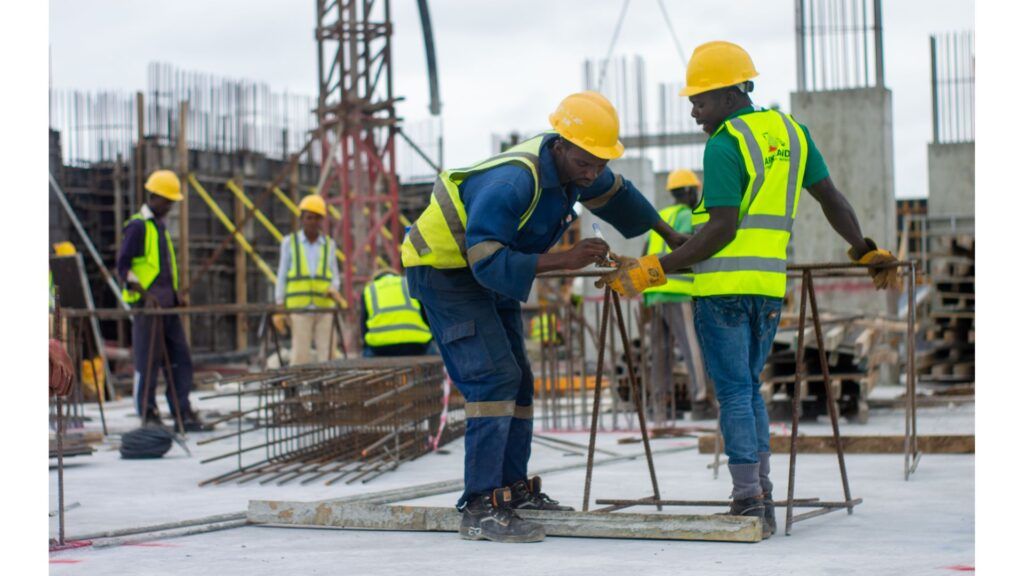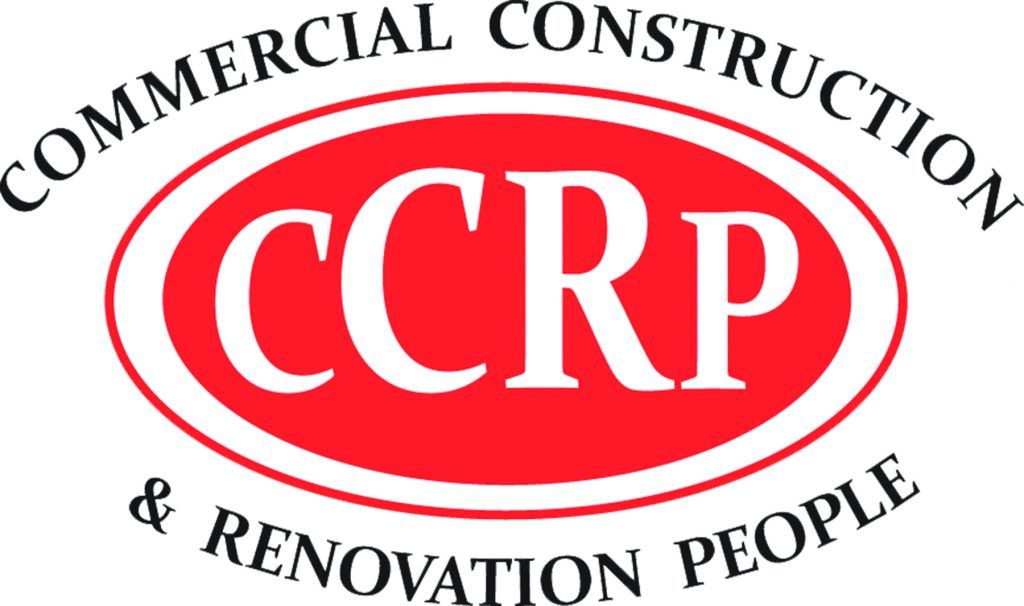The U.S. labor market is facing a crisis: too many open jobs and too few workers to fill them. While high turnover rates in hospitality, food service, and nursing care have garnered attention, the commercial construction sector is also struggling. With approximately 460,000 unfilled construction jobs, companies must adopt new strategies to address workforce shortages.
I’ve seen firsthand how companies in construction and other industries are tackling these challenges. The reality is that the labor shortage is not a temporary setback but a systemic issue that requires innovative, long-term solutions. Here, I’ll break down the root causes of the labor gap, its impact on commercial construction and the strategies employers can use to build a sustainable workforce.
 Understanding the Labor Gap in Commercial Construction
Understanding the Labor Gap in Commercial ConstructionThe U.S. labor force is still missing 1.7 million workers compared to pre-pandemic levels, and even if every unemployed person found a job today, there would still be millions of unfilled positions. In construction, the shortage is particularly severe due to a combination of factors. An aging workforce means many skilled tradespeople are retiring, with fewer young workers entering the industry to replace them.
A declining interest in the trades, a result of many factors but most notably a shift toward college degrees and a reduced focus on vocational training and apprenticeships, means there are fewer qualified workers ready for hire. High turnover, long a cost of the construction industry due to seasonal work, better pay elsewhere, or job instability, means leaders are constantly bearing the cost of recruiting, training, and trying to retain talent to overcome turnover rates consistently over 50%.
Lastly, growing restrictions on immigration has significantly impacted a construction industry long reliant on foreign workers. Visa backlogs, stricter immigration policies, increasing deportations and immigration rhetoric have all combined to reduce the pool of available immigrant workers.
With demand for commercial construction projects growing, the need for skilled, reliable workers has never been more urgent. Furthermore, just as consumers across the country face growing costs from inflation, so too does the construction industry. Wood, steel, aluminum, copper, these and many staples of the commercial construction seem likely to be impacted by looming trade wars, which will increase the cost of construction at the same time labor supply cannot meet demand.
How Can Construction Companies Close the Labor Gap?
With such high turnover rates, construction companies must first take steps to reduce that number. A significant portion of turnover, up to 42%, is preventable through taking one or all of the following steps. Many workers leave due to job dissatisfaction, lack of benefits and limited career advancement opportunities. Companies that invest in their workforce through higher wages, better working conditions and training programs can significantly reduce turnover.
Career development pathways through implementing mentorship and apprenticeship programs can help attract and retain talent, most especially for the younger workers so vital to the industry. Additionally, skills training can make employees more likely to stay long term. Skills training in particular also can help reduce burnout and stress, as it enables workers to perform a wider variety of jobs and tasks and so makes them more likely to remain productively engaged.
In addition to new programs to increase retention, leaders can expand benefits. Higher wages, including bonuses tied to some of the above programs, can help attract new talent as well as retain existing workers. This can have a reinforcing effect with such programs, increasing the likelihood employees will take them up, improving the benefits to employees and employers alike of those programs.
Additionally bonuses tied to retention can go a long way to reducing turnover. Outside of increasing wages, companies can offer competitive health insurance, retirement plans, and paid leave to help differentiate themselves from competitors, both in the construction industry and in other industries competing for workers from the same pool.
Importantly, companies can retain workers by offering year-round employment. Seasonal work always had an ingrained difficulty in employee retention. In a competitive labor market, the odds of retaining employees with such a long gap between work grow quite long. This also can be tied in with improving working conditions through flexible and improved scheduling, enabling employees to take time off knowing they will still have a job when they return.
Yet again this positively impacts employees in many ways, as employees able to take time off without worrying about job security will be less prone to stress and burnout.
 Underutilized Labor Pools
Underutilized Labor PoolsWith a long-running labor shortage, one of the keys will be broadening the pool of workers from which employers draw. Construction companies often overlook key workforce segments that could fill critical roles, with women especially representing an oft-ignored pool.
Additionally there are groups that have been overlooked that have programs all around the country working to help them stably enter the workforce. One such group is veterans, many of whom will come with parallel skills that can enable them to be quickly integrated into the workforce.
Another would be engaging with Second Chance programs which work with formerly incarcerated individuals or those who otherwise have been impacted by the justice system, a pool of workers often ignored not only by construction but by many industries.
Additionally, construction companies can work to hold onto and attract older workers while also attracting younger workers. Scheduling flexibility can allow experienced workers, or older and semi-retired individuals, to stay in work part-time. By filling part-time roles with those seeking part-time work, more full-time positions will be available to the middle age group of the workforce, improving retention rates.
Simultaneously, business leaders can focus on partnerships with trade schools and community colleges, and even many in traditional four-year institutions by demonstrating the competitive benefits and career growth opportunities available. These younger workers can also be integrated into the mentorship and partnership programs, even pairing them with some of the older and semi-retired workers who have invaluable experience and knowledge to share.
Lastly, in an industry that has long been heavily dependent on foreign labor, construction leaders must become fluent in existing immigration programs. Programs such as the EB-3 visa provide a pathway to long-term employment through employee sponsorship.
When paired with the actions outlined above this can help keep the EB-3 pipeline flowing, as existing employees will want to re-up and prospective employees worldwide are more likely to apply when benefits, wages and working conditions are visibly desirable.
Address Policy Challenges Affecting Workforce Availability
In the current climate, business leaders must not only work to understand the pathways to getting foreign workers but must also work to ensure those pathways remain open, and indeed grow. Even within the existing visa process, tedious paperwork requirements and long backlogs act as a deterrent to potential employees.
A more efficient and streamlined process could erase that backlog, shortening the time required to navigate the system and making employers better able to rapidly address labor shortages. Additionally these requirements and wait times also have a dampening effect on applicants, so a better process would lead to more workers entering the applicant pool.
At the same time leaders push for a more efficient system, they also must work with government leaders to reduce or eliminate unnecessary red tape for hiring foreign workers.
Furthermore, while tariffs will impact many industries, few will be impacted as severely as the construction industry. High demand for commercial construction, coupled with the rising material costs that would result from tariffs and other trade policies, place great strain on the industry. Higher costs means less money to invest in wages and benefits, or to implement training and mentoring programs, weakening the industry’s ability to address the labor shortage.
Without action to address the labor shortage greater stress will be placed on existing workers, leading to higher rates of burnout and turnover, a problem that could quickly spiral almost out of control. Furthermore, such high material prices means it would be difficult for most companies to reach the economies of scale that helps reign in costs and grow the industry.
While industry action can be taken to address the labor shortage, much of it will be for nought if it is not paired with government action to ease the current burden, and avoid putting up new roadblocks in the future, of immigration and trade policies.
A Long-Term Workforce Approach is Needed
The labor shortage in commercial construction isn’t going away on its own. Without strategic action, companies will continue struggling to meet demand, leading to delays, higher costs, and lost business opportunities. Employers who take a proactive approach—improving retention, diversifying recruitment strategies and advocating for workforce-friendly policies—will be best positioned to thrive.
By taking a forward-thinking approach, construction firms can bridge the labor gap and build a stronger, more resilient workforce for the future.
BIO
John Dorer is a Global Mobility Executive with a focus on Employer Sponsored Green Card solutions and the CEO of EB-3 Staffing Solutions for Employers. Headquartered in New York City, eb3.work provides effective solutions in addressing the country’s chronic and growing unskilled and entry-level labor shortage by connecting employers with foreign nationals seeking to work legally in the United States. eb3.work leverages its proprietary business processes and technology to assist qualifying U.S. companies and foreign national workers in navigating the complex U.S. immigration system.
 Understanding the Labor Gap in Commercial Construction
Understanding the Labor Gap in Commercial Construction Underutilized Labor Pools
Underutilized Labor Pools





























